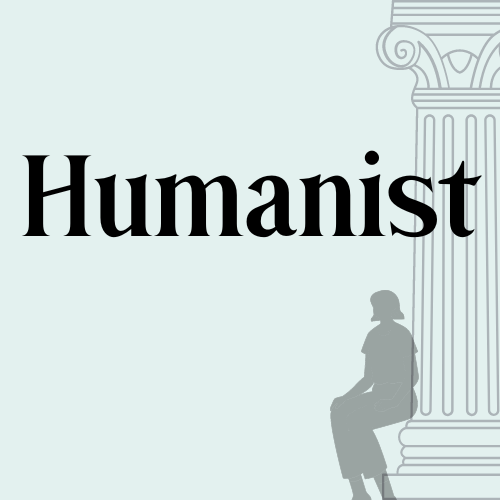Joining the world's nerdiest conversation: learning to read (and write) academic papers
By teaching students to pick apart and become conscious of the structures and conventions of scholarly writing, we can help them to absorb those conventions and replicate them.

If there was ever a time when you could assign students to "write a paper" and expect to get a good result without any other explicit instructions or parameters, now is not that time. But in my own experience, this lack of guidance has been a problem for awhile. I consider myself an above-average writer, but I struggled with writing in college. I was good at writing papers in English class in high school, focusing on close reading of motifs and rhetorical techniques, so that's the kind of paper I wrote in college – and most of my professors seemed dissatisfied with it, and baffled as to why I was doing it. In one Classics course, I wrote what one professor saw as a chimerical hybrid of a literature and a history paper, and I couldn't understand why those two genres were supposed to be separate or what the difference was between them. None of my professors resolved my confusion.
I finally did learn to write properly in the genre of classical studies, thanks largely to biweekly feedback from my dissertation advisor, but not in any other genre of academic writing. I don't know how to write a legal argument, cite images or artifacts, create tables or infographics, write a Methods section, or separate Results from Discussion, because none of those conventions belongs to the genre of classical philology disciplinary writing, and that's the only genre I know. That's the only scholarly "conversation" I participate in, so that's the set of writing conventions I use, almost entirely as a matter of unconscious habit, instinct, and acculturation.
Writing something without knowing what's expected of you is a terrible feeling, and grading bad papers is a terrible experience, so no one is happy with this state of affairs. This is true in the classroom, but it's also true of peer review. It feels awful (or at least I thought it did) to reject a manuscript that one of your colleagues has worked really hard on, for months or years. It also feels awful to have a manuscript rejected, no matter the reason, and there can be so many reasons: a lack of originality, failure to explain how your work is building on the work of other scholars, a lack of clarity or organization in your work, and so on (and those are just the good, fair reasons to reject an article – and articles are often rejected for bad, unfair reasons). Style and readability don't count for as much as they should, but using discipline-specific terms correctly does. You have to pass as a well-socialized participant in the scholarly conversation, according to criteria that are unwritten and highly subjective.
Universal Design for Learning guidelines suggest that writing a paper shouldn't be the only way students can show knowledge, so a paper assignment is not always the answer (or the only option to offer to students). But some students do need to practice writing papers (if they want to go to grad school, for example) to meet their goals, or they enjoy the process of writing. For those students in particular, it's important to understand just what an academic paper is, in the context of our discipline.
Beyond our discipline's genre of academic writing, it's also more vitally important than ever to train students – and ourselves – to distinguish good arguments from bad, and to evaluate whether evidence is being used effectively and responsibly. The smartest PhDs I know still have to work hard all the time to escape biases and blind spots, even in scholarly work. Since we're in the business of generating and arbitrating new knowledge, we ought to be well positioned to teach our students vital skills in information literacy.
Why is it so hard to define what makes a good academic paper in our disciplines, to say nothing of teaching students to write one? Writing in classical studies should be a praxis, a cycle of mutually informing reflection and practice, but the academy rarely gives us much space for that kind of reflection. We're used to thinking of our research as separate from our teaching, and I don't think I ever discussed my writing process with students in class. But I think it's time to start. Transparency about our process would help students to understand what we're asking of them when we ask them to write papers – and would help them understand what the point is, so that they feel less "pseudotransactional" (to borrow Joseph Petraglia's term).
Writing in College
Lee Ann Carroll, revealing the results of an in-depth study of 20 college students and their development as writers across their college careers, writes that "What are usually called 'writing assignments' in college might more accurately be called 'literacy tasks' because they require much more than the ability to construct correct sentences or compose neatly organized paragraphs with topic sentences." They require "a complicated sequence of 'literacy acts'" that is specific to a particular field, such as researching in appropriate places, applying disciplinary core concepts, and summarizing and drawing conclusions from source material of one kind or another. Students can't learn all of those things for all disciplines in freshman comp. Increasingly, thanks to the pandemic, they have very little practice with any of those literacy acts in any field.
In Writing in the Academic Disciplines: A Curricular History, Iowa State's David Russell explains that writing instruction in higher education has never quite adapted to the hyper-specialized, siloed research university. Before that era, students learned rhetoric and oratory; writing and speaking about a topic to the college community were fairly similar, and the rules of argumentation fairly consistent. Now, many experts seem to wonder if "writing across the curriculum" – writing as a generalized skill that can transfer across disciplinary and departmental boundaries – is even possible. Russell compares it to teaching generalized sports ball and expecting students to be able to play basketball, baseball, and soccer as a result. Universities certainly don't do it any favors by assigning freshman writing courses to the most precariously employed adjuncts and grad students, few of whom are scholars of composition pedagogy.
Eventually, the neophyte so thoroughly internalizes the discourse of the community and, with it, the community's perceptions, assumptions, and behaviors, that she begins to think and act—and write—like a member of the community. By the time she is accepted as an adept, she has at least tacitly understood and accepted the community's values and goals, its rules and sanctions; she has developed an allegiance to the community, an identity and role within it. ...Students' struggles to comprehend the new symbolic universe and operate within it are often misinterpreted by the instructor, who has been so gradually and thoroughly socialized into the symbolic universe of the discipline that he often cannot see or understand why others, who are writing about the same "content," do not "make sense." (Writing in the Academic Disciplines, 16-18)
Amanda French at Birmingham also describes scholars as developing a professional academic writing habitus as a form of social capital and identity in academia.
Professors need to bear in mind that their own expectations for "writing a paper," their particular assemblage of literacy acts, may differ wildly from what would be expected of "writing a paper" anywhere else across campus. I can't expect my colleagues in the English department to teach students how to write a classical studies paper, because that's not their world. I write classical studies papers for an audience of my colleagues in the discipline; neither my colleagues in other departments nor my students belong to that community, so how could they know how we "talk" to each other?
If learning to write an academic paper is a matter of socialization, that means that having students write isn't the best way for them to learn to write, especially when they're starting out: instead, they should be reading. By teaching students to pick apart and become conscious of the structures and conventions of scholarly writing, we can help them to absorb those conventions and replicate them.
Socializing academic writers
This has all made me think about how to create an exercise leading students through the rhetoric of an academic paper. In choosing a good article for this purpose, I would look for one that is well-organized, clear, and relatively short – I might even choose a work of public scholarship for general readers, if I'm working with an intro-level class. I would certainly look for an article that does not have any un-translated quotations in other languages. I would probably preface the reading by explaining the process of peer review that the article would have had to survive to reach publication.
In a worksheet sort of assignment, or maybe even as a class activity if I want to give it more attention and make it more collaborative, I would ask students to get down to the structure of the argument, the "skeleton" of the paper:
- What is the main point of this article? (a summary known on Twitter as “TL;DR” - “too long; didn’t read”)
- If you had to pick one sentence from the introduction that says it all, which sentence is it? If I don’t have time to read more than a sentence to get the whole point, which sentence should I read?
- Is there one sentence from the conclusion that does the same thing, or states the argument more clearly?
- Does the author map out and forecast or "signpost" the structure of the article in the introduction? If so, copy-paste it here.
- Is the article divided up into sections by headings in larger or bold font? What are the headings of each section (copy-paste)?
- If there are no headings, what headings could you add to divide the article up into sections?
- Find the main parts of this article’s argument – the “bones” or “skeleton” underneath all the flesh. Copy-paste one sentence for each section or heading that best sums up the whole section.
- Include any sentence that includes the phrase “I argue”.
- Do these sentences match what the introduction said the paper would contain and prove? Are there any differences?
- Pick one of those “skeleton” sentences. How does the author prove that this point is true? What evidence do they use to prove it?
I might also ask the students to think about the first sentence of the paper: why do you think the author started this way, and what does it tell you? Starting a paper is the hardest thing to do, and most students start with absurd over-generalizations, as does ChatGPT. Many of us professionals write our introductions last, and struggle to know where to start – maybe we would learn something from discussing this too!
Then I would start calling students' attention to how the article constitutes one "turn" in an ongoing scholarly conversation:
- According to the article, what were the last 2-3 points made in the conversation before this article that made the scholar want to write their own reply?
- According to the author, which scholar(s), book(s), and/or article(s) are they responding to? Disagreeing with? Correcting? Adding to?
- If you were one of those previous authors, would you want to write your own article to respond to this one and continue the conversation?
- How does the author express disagreement with other scholars? Copy-paste an example, and explain how the author justifies or defends their argument as being stronger than the other author's argument. (Think of this as "bringing receipts" – or is that expression already out of fashion?)
- Which paragraph or page in the article has the most footnotes? How would you explain why that is? What about that paragraph or page required the author to show who they’re talking to in this conversation, or where they got certain information or ideas?
- Which footnote has the largest number of sources included in it? What is the sentence where it’s footnoted (copy-paste)? Why do you think there are so many sources cited on this point, or so many articles/books written on this topic? Why didn’t the author discuss each one individually?
- Did the author include long quotations (more than a few words) from past contributions to the conversation? Copy-paste one here, and explain why you think the author chose to quote the person’s exact words instead of summarizing them.
- Did the author include short quotations of a word or two? Copy-paste one here, and explain why you think the author chose to quote the person’s exact words.
- Does the author use any abbreviations? Copy-paste them here, and explain why you think this term is used so often in this conversation that it’s worth abbreviating (and can still be recognized by experts)
I might draw students' attention particularly to who is participating in this conversation:
- What is the earliest date of any source cited in the footnotes of this article, how old is it, and what is the sentence where it’s footnoted (copy-paste it here)?
- Does the bibliography have any URLs or websites in it? What kind of websites are they?
- Google the author (or first author) of each of the first 5 bibliography entries. What is their profession? Where did they work when the article was published? What academic degrees do they hold?
- Who published the articles and books in the bibliography? What journal titles do you see? What presses? (You may have to Google to find out which ones are journals and which ones are book publishers.) Are there any publishers represented that are NOT journals or presses?
- Use our campus library's website to find a full-text online version of one of the journal articles and paste the URL here. What database contains the article?
This is a good opportunity to have a conversation with students about the purpose and politics of citation, and to consider feminist citation practice following in the wake of Sara Ahmed:
In this book, I adopt a strict citation policy: I do not cite any white men. ...My citation policy has given me more room to attend to those feminists who came before me. Citation is feminist memory. Citation is how we acknowledge our debt to those who came before; those who helped us find our way when the way was obscured because we deviated from the paths we were told to follow. (Living a Feminist Life 15-16)
And I might end the activity with more general questions:
- Does anything seem to be missing from the article?
- Does anything seem to be in the article that shouldn’t be?
- What hasn’t been explained well?
- Does anything seem to be in the wrong order?
- How is this article different from what you’re reading in other classes?
- How does writing something like this make the author qualified to teach at the college level?
Am I missing any other questions that would help students see the techniques and rhetoric at work in a scholarly article? Share them in the comments!
You certainly don't have to ask all of these questions about a single article; you could spread them out across many readings and make them a regular component of class time. This activity is designed to lead students through the kind of detailed reflection that will empower them as conscious, acculturated participants in one particular discipline's scholarly discourse. This is a lot to ask of any student, and it's all in the context of reading one single article. Not every student needs to do this. But if they don't need to master this kind of reading in a particular class, I would argue, then they don't need to write a traditional scholarly paper for that class either, and it's time to design a different assessment.
Further Reading
Douglas Downs & Elizabeth Wardle. (2007). "Teaching about Writing, Righting Misconceptions: (Re)envisioning 'First-Year Composition' as 'Introduction to Writing Studies.'” College Composition and Communication, 58(4), 552–584. https://dougdownsteaching.wordpress.com/wp-content/uploads/2016/10/downs-and-wardle-fyc-as-writing-studies.pdf
David R. Russell. (2002). Writing in the academic disciplines : a curricular history (2nd ed.). Southern Illinois University Press.





